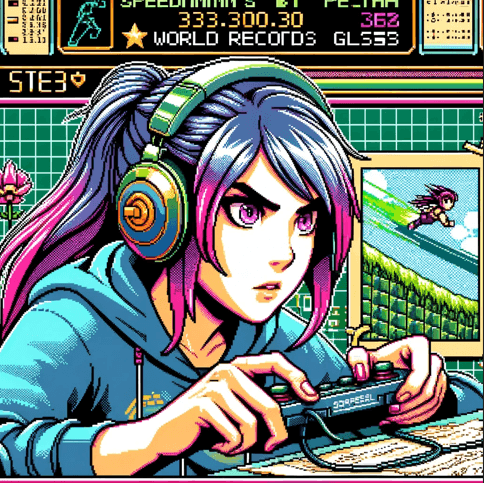 I must say, I was intrigued by Astroneer, especially with it being developed and published by System Era Softworks. Using skill and strategy to make it through harsh environments is what attracted me initially. And needless to say, user reviews that appreciated the infinite ways to approach progression really made me aware of the game’s depth and complexity.
I must say, I was intrigued by Astroneer, especially with it being developed and published by System Era Softworks. Using skill and strategy to make it through harsh environments is what attracted me initially. And needless to say, user reviews that appreciated the infinite ways to approach progression really made me aware of the game’s depth and complexity.
 That’s quite true! For someone like me who loves open-world exploration, the option to delve into every inch of the 7 planets gives a powerful sense of freedom. You want to dig to the planet’s core or build a ramp to heaven? Go for it! It’s a little masterpiece of System Era Softworks!
That’s quite true! For someone like me who loves open-world exploration, the option to delve into every inch of the 7 planets gives a powerful sense of freedom. You want to dig to the planet’s core or build a ramp to heaven? Go for it! It’s a little masterpiece of System Era Softworks!
 Yes, indeed. The intricacy is delightful. But what really fascinated me was the amount of choice in base and vehicle construction. Every item you find can be connected to create unique designs based on your preferences. The sense of individuality imparted by Astroneer left me striving to uncover every artifact and build every possible creation.
Yes, indeed. The intricacy is delightful. But what really fascinated me was the amount of choice in base and vehicle construction. Every item you find can be connected to create unique designs based on your preferences. The sense of individuality imparted by Astroneer left me striving to uncover every artifact and build every possible creation.
 I also found that attractive. The extensive physical deformability of the environment presents fascinating opportunities for strategizing speed runs. Imagine looking for the fastest routes through the celestial bodies or building the most efficient excavations to the planet’s core.
I also found that attractive. The extensive physical deformability of the environment presents fascinating opportunities for strategizing speed runs. Imagine looking for the fastest routes through the celestial bodies or building the most efficient excavations to the planet’s core.
vibrant, whimsical, and visually striking
 Spot on! Moving to gameplay mechanics, I loved how interactions with the environment genuinely shaped my gaming experience. The deform tool feels so gratifying when digging, collecting or reshaping. I found it especially satisfying to maneuver in cave biomes.
Spot on! Moving to gameplay mechanics, I loved how interactions with the environment genuinely shaped my gaming experience. The deform tool feels so gratifying when digging, collecting or reshaping. I found it especially satisfying to maneuver in cave biomes.
 Regarding the narrative component, while Astroneer isn’t story-driven in the conventionally linear sense, the 25th century setting and the Intergalactic Age of Discovery theme ensure there’s a purpose behind your planetary expeditions.
Regarding the narrative component, while Astroneer isn’t story-driven in the conventionally linear sense, the 25th century setting and the Intergalactic Age of Discovery theme ensure there’s a purpose behind your planetary expeditions.
 I concur. The appeal of Astroneer lies in its unfolding environments rather than unfolding plotlines. There’s a lovely balance of scripted and emergent narratives. It’s the new mysteries and rare discoveries that keep the player invested.
I concur. The appeal of Astroneer lies in its unfolding environments rather than unfolding plotlines. There’s a lovely balance of scripted and emergent narratives. It’s the new mysteries and rare discoveries that keep the player invested.
 Visually speaking, the game’s aesthetics are almost dreamlike, accompanied by lively animation quality. The vibrant interplanetary visuals add a bright, colorful charm to the overall tone of the game.
Visually speaking, the game’s aesthetics are almost dreamlike, accompanied by lively animation quality. The vibrant interplanetary visuals add a bright, colorful charm to the overall tone of the game.
Bases, vehicles, and crafting stations
 And let’s not underestimate the role of sound in this game. The reviews were right, the soundtrack is indeed transcendent and goes a long way in instilling a sense of wonder and tranquility while exploring.
And let’s not underestimate the role of sound in this game. The reviews were right, the soundtrack is indeed transcendent and goes a long way in instilling a sense of wonder and tranquility while exploring.
 As far as character development goes, there isn’t a great deal in the traditional sense. The Astroneer is more of a vessel for the player. But that doesn’t detract from the experience because the game doesn’t hinge upon character interactions but on bold exploration and innovation.
As far as character development goes, there isn’t a great deal in the traditional sense. The Astroneer is more of a vessel for the player. But that doesn’t detract from the experience because the game doesn’t hinge upon character interactions but on bold exploration and innovation.
 About challenge level, I’d say it’s balanced considering it’s more about resource management and exploration than combat difficulty. There’s no artificial feeling of difficulty, as the challenge depends largely on the player’s own actions.
About challenge level, I’d say it’s balanced considering it’s more about resource management and exploration than combat difficulty. There’s no artificial feeling of difficulty, as the challenge depends largely on the player’s own actions.
 Truly. And that ties into replay value as well. The proliferation of secrets, the extensive creative sandbox, and the joy of bracing diverse environments with friends provide excellent grounds for replay.
Truly. And that ties into replay value as well. The proliferation of secrets, the extensive creative sandbox, and the joy of bracing diverse environments with friends provide excellent grounds for replay.
 Looking at other games in this genre, Astroneer stands out by giving players an extraordinary amount of freedom and choice. The building mechanics and deformable landscapes are especially noteworthy.
Looking at other games in this genre, Astroneer stands out by giving players an extraordinary amount of freedom and choice. The building mechanics and deformable landscapes are especially noteworthy.
 Perhaps future updates or sequels could add detailed character stories or multi-layered quests, though, without encroaching upon the liberating exploration-based gameplay.
Perhaps future updates or sequels could add detailed character stories or multi-layered quests, though, without encroaching upon the liberating exploration-based gameplay.
beautiful, colorful landscapes, ranging from lush forests and rolling hills to barren, alien terrains
 I’m hopeful and curious to see where System Era Softworks might take Astroneer in the future or what new marvels they might bring into the gaming panorama.
I’m hopeful and curious to see where System Era Softworks might take Astroneer in the future or what new marvels they might bring into the gaming panorama.
 Cheers to the future of gaming where endless exploration aligns with speed, skill, and a dash of meticulousness!
Cheers to the future of gaming where endless exploration aligns with speed, skill, and a dash of meticulousness!
